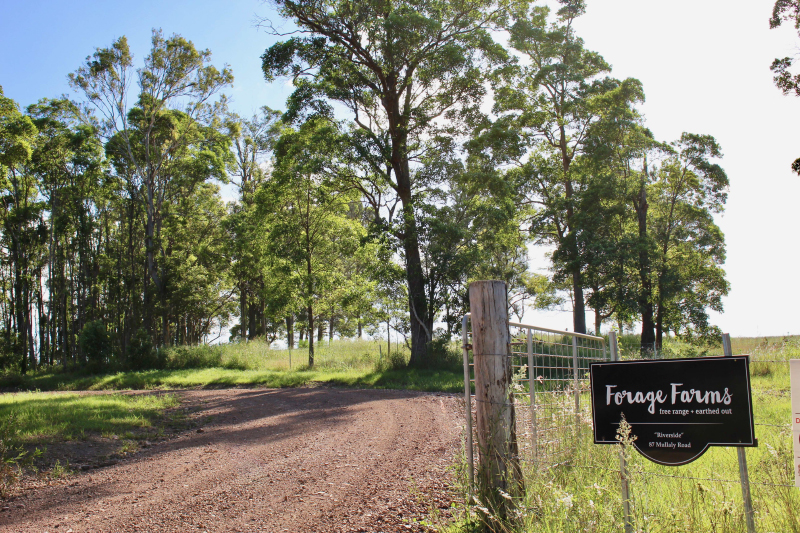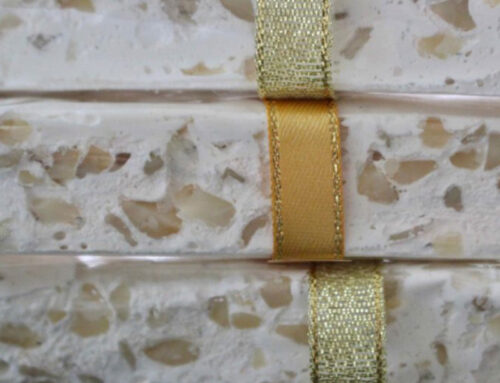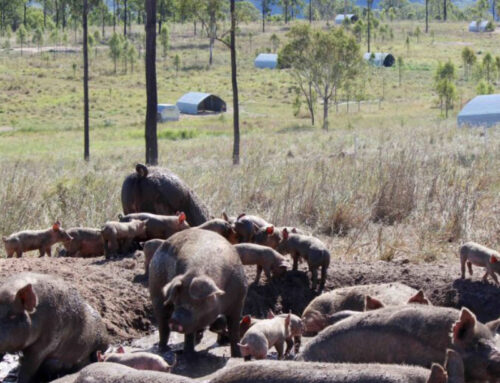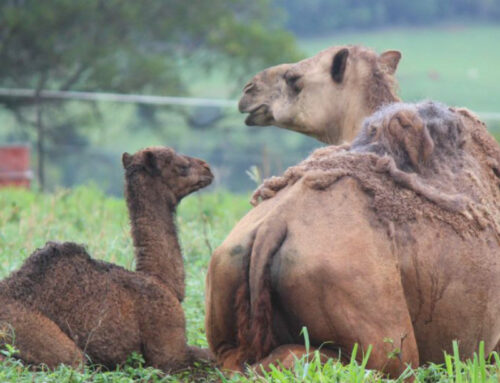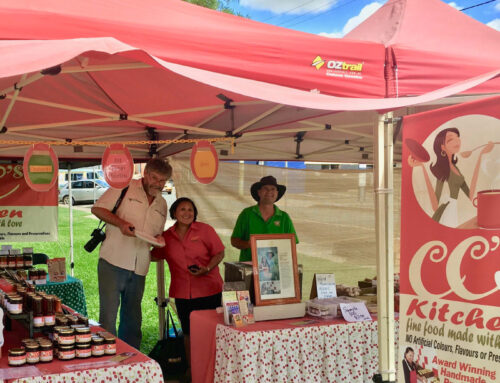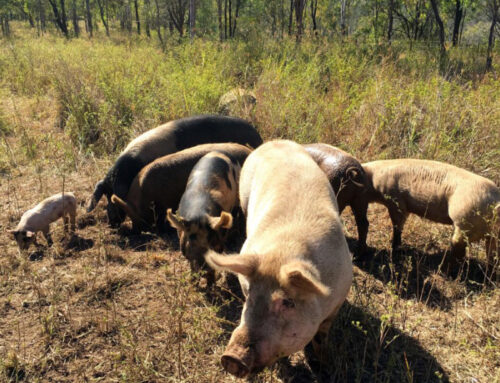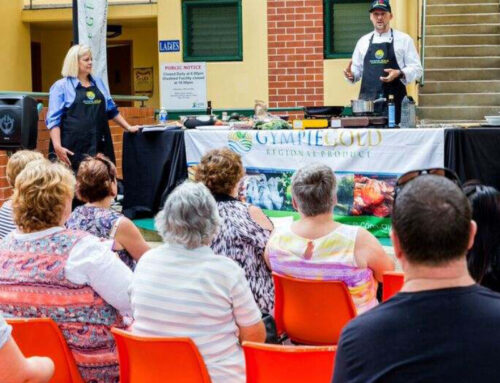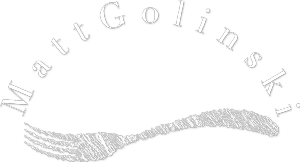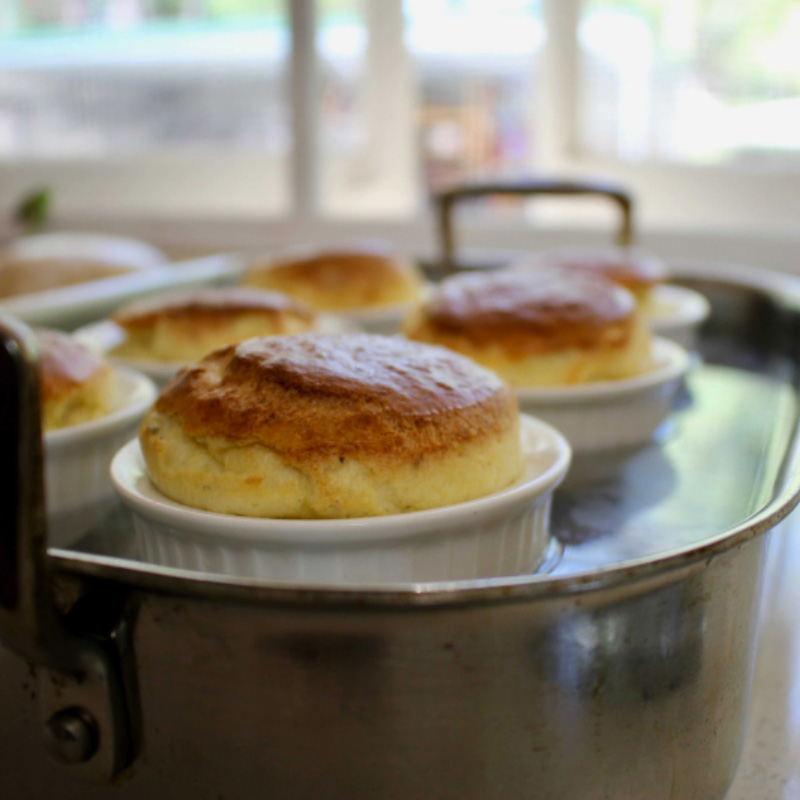
The Perfect Cheese Souffle
BY MATT GOLINSKI
Join Matt in supporting your local producers by sourcing local and seasonal ingredients where ever possible.
SHARE MATT'S RECIPES + STORIES
After a recent trip to Forage Farms, just south of Gympie in Kybong (I’ll talk more about them later), I arrived home with a couple of dozen super fresh pastured eggs, and knowing I had a chunk of Kenilworth Cheeses new blue cheese in the fridge, I thought it would be the perfect opportunity to do a little tutorial on making the perfect cheese souffle.
I’ve been making this recipe since I was an apprentice, and I don’t have to look it up any more because it’s so firmly ingrained into my cooking memory bank.
This version is what’s called a twice baked souffle, and the beauty of it is that it you can bake it, let it cool, remove it from its dish and rebake it, and it rises again. That means you don’t have to serve it in it’s dish and can make it look prettier on a plate.
It’s a good idea to have everything ready and laid out before you start so you can easily go from one step to the next.
The ingredients you’ll need are:
60gm butter, diced
60gm plain flour
350ml milk
30gm parmesan, grated
50gm blue cheese (or any cheese you like – cheddar, gruyere, goats cheese, etc)
4 eggs, separated
Salt and pepper

Put the diced butter in a medium saucepan and the milk in a small saucepan and put them both on the stove on high.
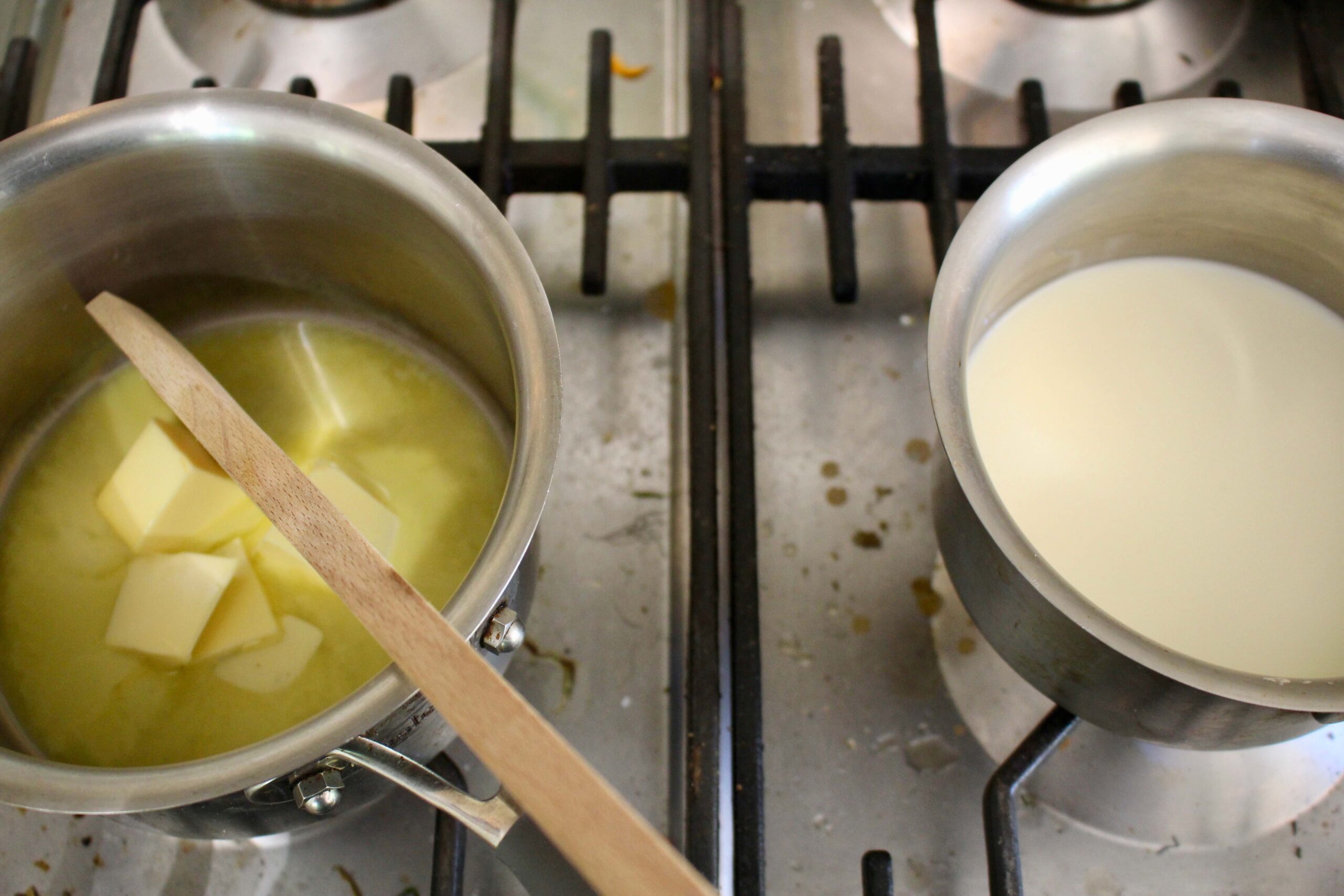
You just want to get the milk hot so turn it off when it starts to bubble.
Once the butter is melted add the flour and stir over a medium heat for a couple of minutes. This is called a roux.
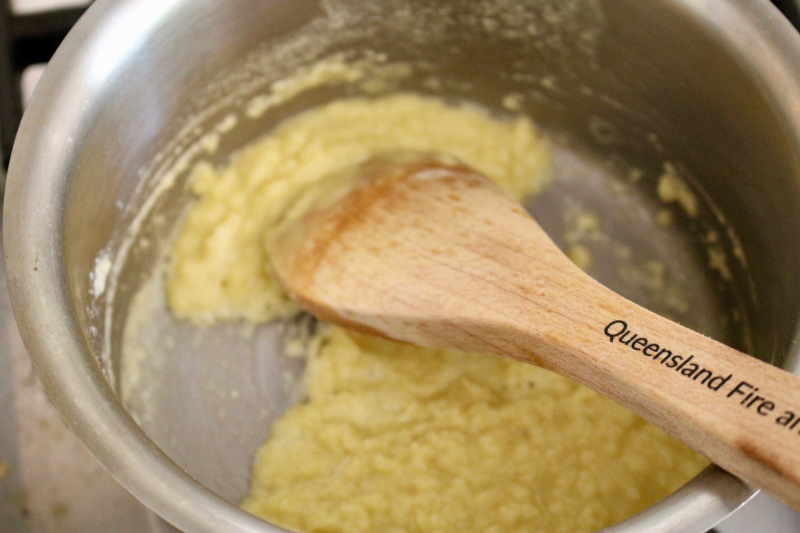
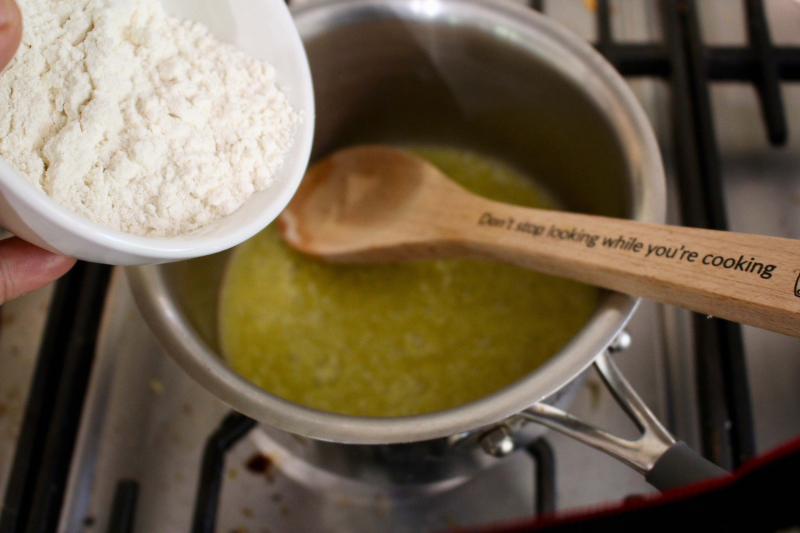
Slowly stir in the hot milk a little at a time, allowing it to thicken before adding more.
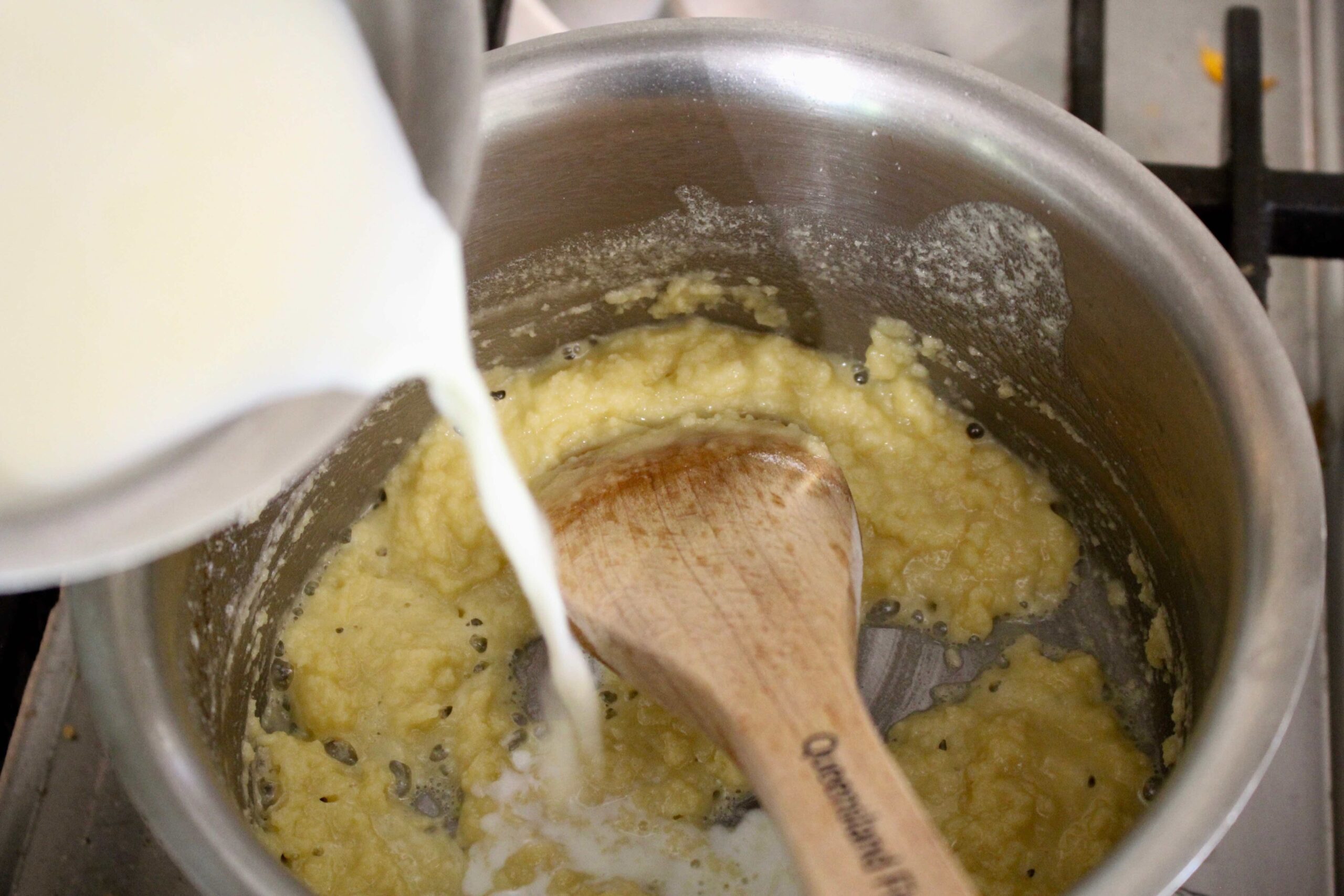
In the end you should have a thick glossy béchamel sauce without any lumps.
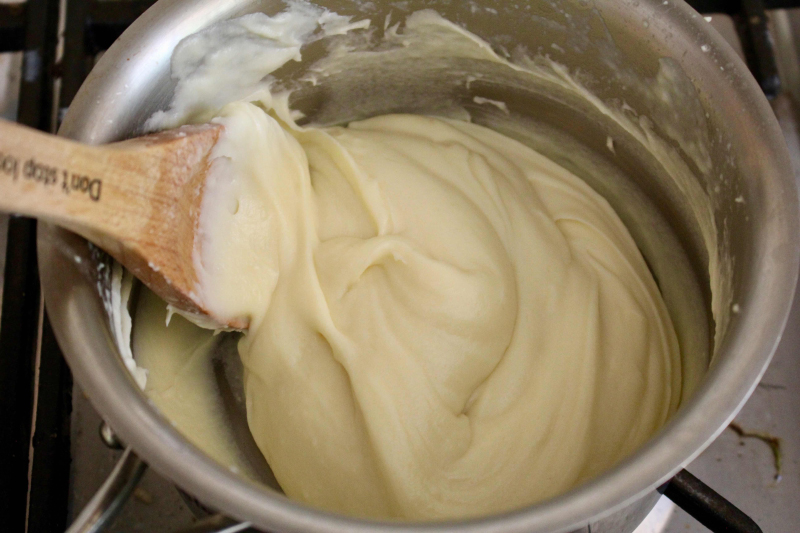
While it’s still nice and hot stir in the grated parmesan and crumble in the blue cheese and let them melt through the mix.
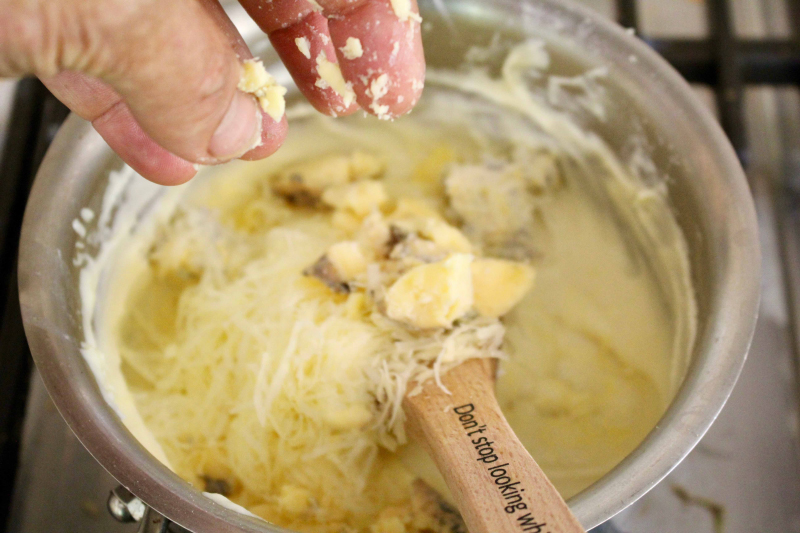
Transfer the mix to a bowl using a rubber spatula and spread it up the sides of the bowl so it cools down quickly. It needs to be cool enough before you add the egg yolks that they don’t cook when you mix them through.
This is a good time to butter your six souffle moulds. Make sure you’re fairly generous with the butter so they don’t stick when you try to turn them out.
Have a taste of the mix and check if it needs seasoning. I normally add a bit, but the cheese generally makes it fairly salty already.
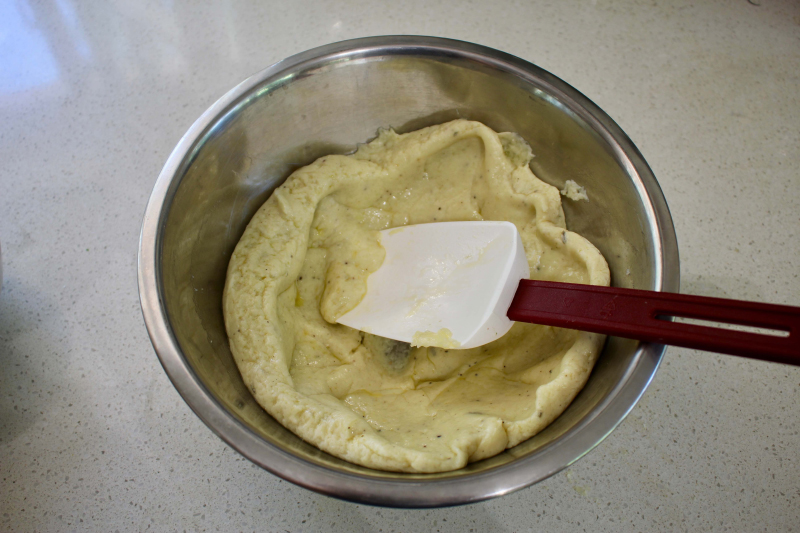
Once the mix has cooled down a bit, stir in the yolks.
This being a dish that is all about the eggs, you need to use good quality ones. And it’s having good eggs that inspired me to make these souffles in the first place.
My trip to Stuart and Megan Andrew’s ‘Forage Farm’ was an insight into what a true pastured free range egg farm is all about. With around 6000 laying chooks they would be one of the largest producers of free range eggs on the coast.
They supply a large amount of IGA’s, restaurants and cafes all up and down the Queensland coast.
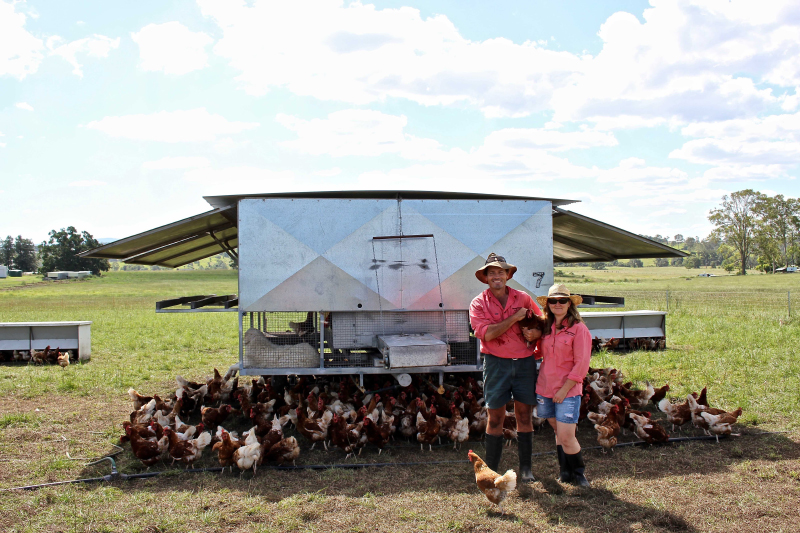
Despite their size, they maintain a sharp focus on their animal’s welfare, the care and regeneration of their land, and the consistency and quality of their product. Stuart’s passion for soil health and biodiversity on the property is clearly evident after spending just a few minutes with him.
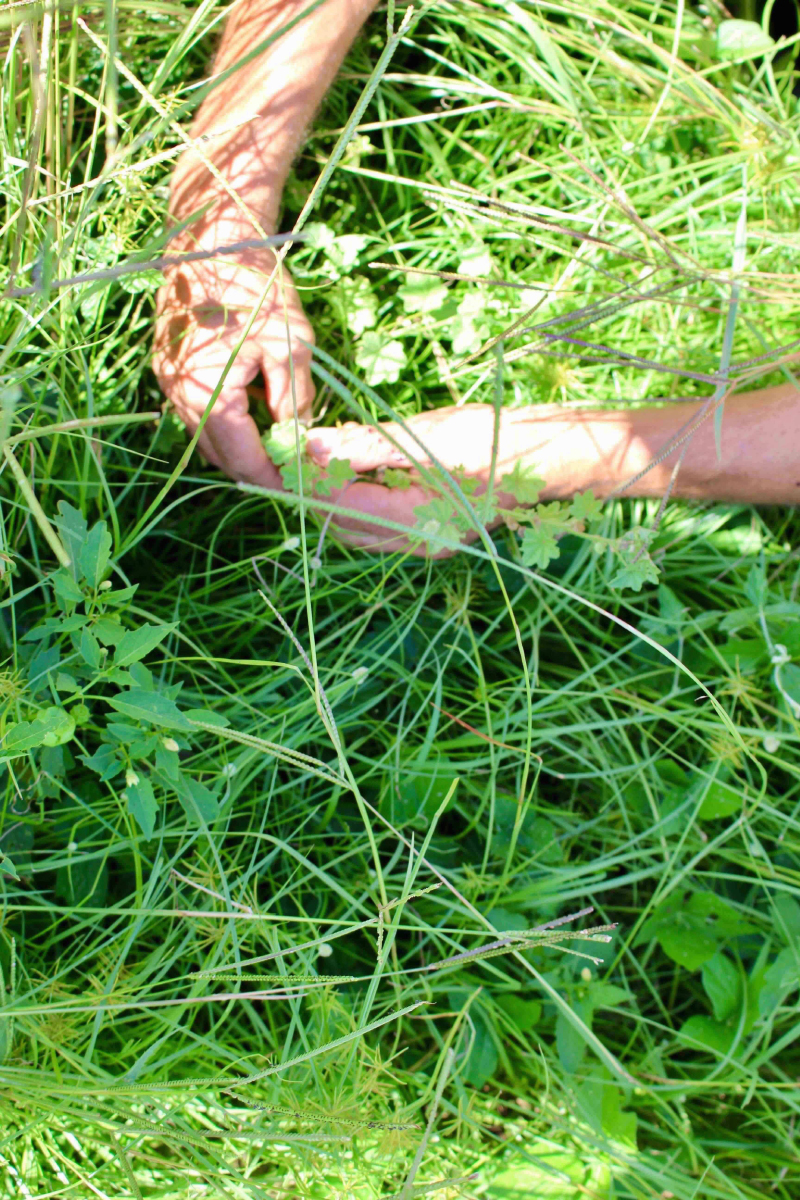
Chicken ‘tractors’, are regularly moved along grassy corridors to provide the chickens with a constant source of foragable vegetation and access to dust bathing. The tractors are never closed up so the chickens are free to come and go as they please. Well trained and loyal Maremmas keep a close eye on them at all times to make sure they’re safe from predators.
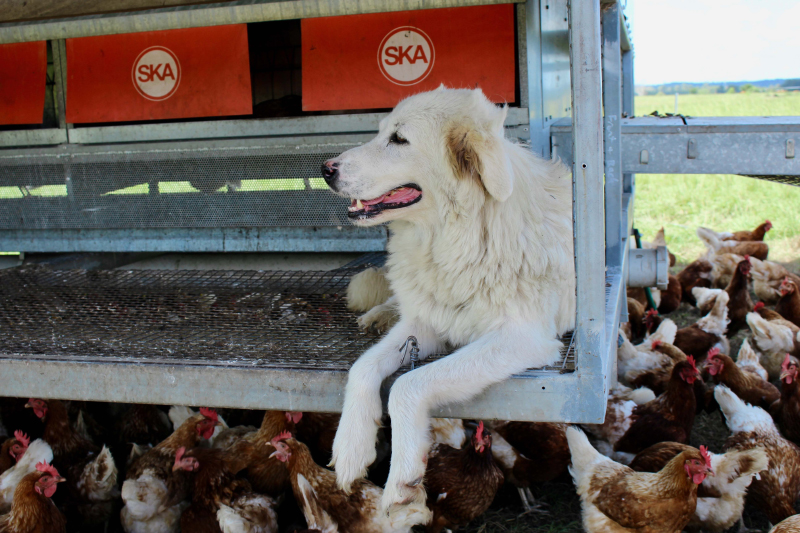
Forage Farms eggs are available all over the coast. They have a great website, www.foragefarms.com.au with a location finder that uses your postcode to tell you where your nearest stockist is. 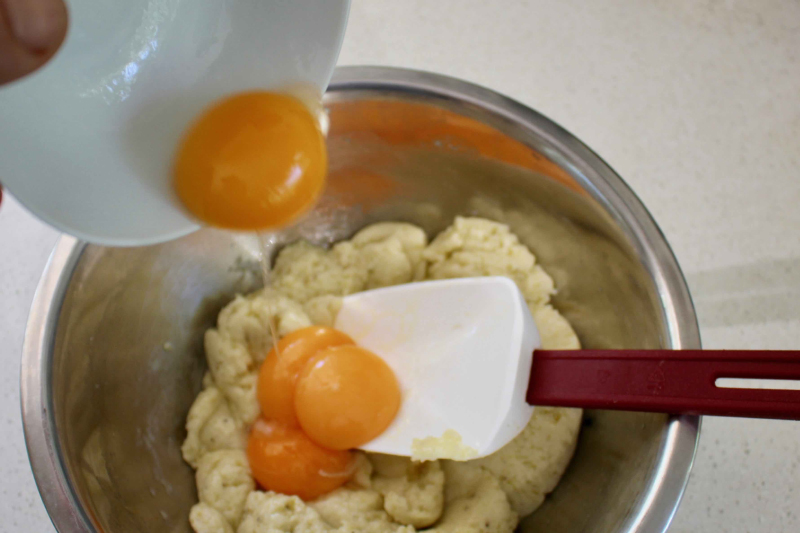
Make sure your egg whites are in a nice clean bowl and there’s no yolky bits in them. Any fat (including the fat that’s in yolks) will stop them from whipping up properly. I always prefer to whisk my whites by hand; you get a much better feel for how whipped they are and are less likely to over whip them. I timed myself when I did this recipe and it took 45 seconds to get them to soft peaks. The trick is to use a a long fine wire whisk.
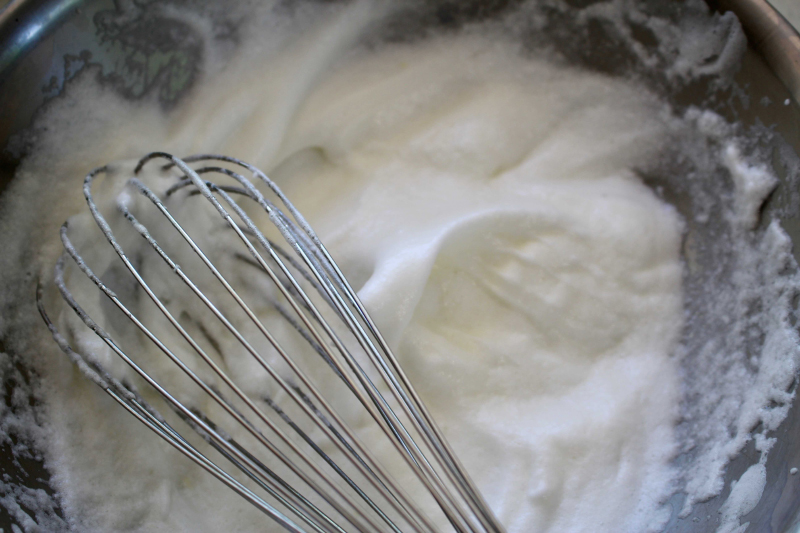
Fold a third of the whites through the souffle base to start with, that’ll lighten them up and make it easier to get the other two thirds through without losing too much air.
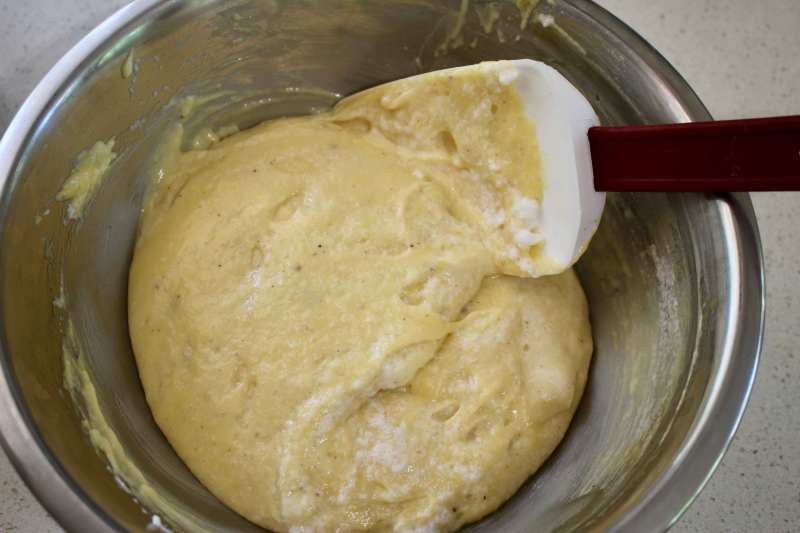
Fold the rest of the white through gently and you’re ready to spoon the mix into the moulds.
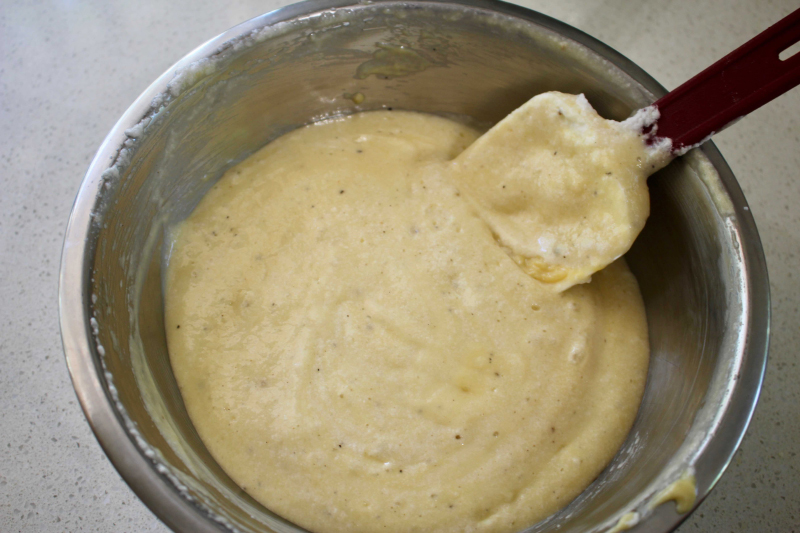
Divide the mixture between the six moulds; it should be about a centimetre below the top of each dish. Gently place them into a tray half filled with hot water and place them in a preheated 160°C oven for about 30 minutes.
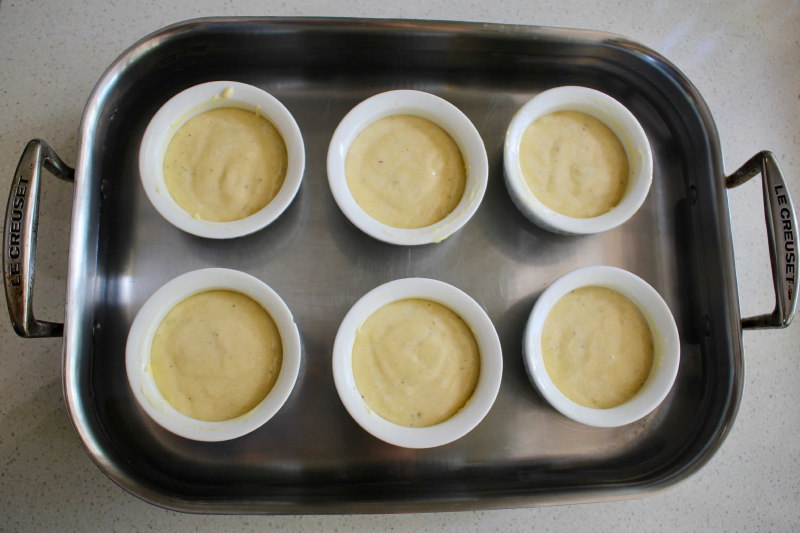
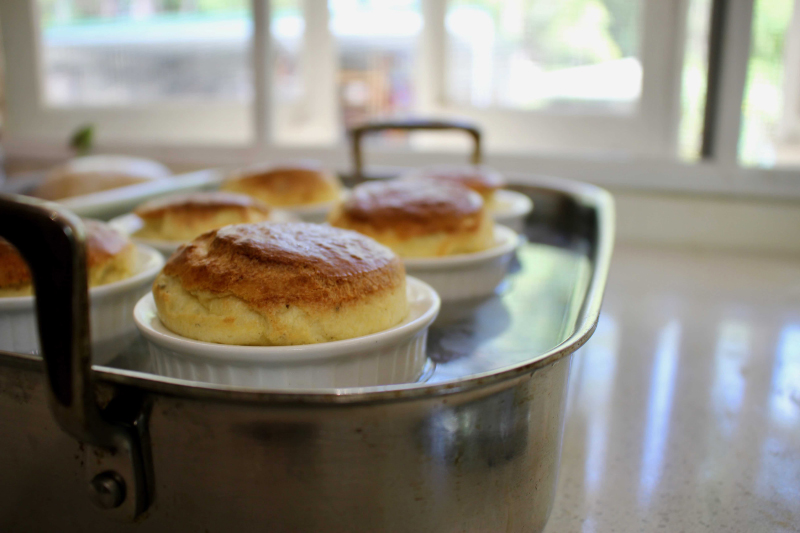
Now you can either serve them immediately in their little dishes before they start to drop, or wait for them to cool down, turn them out of their dishes and put them back in the oven to re-rise. I normally put about a tablespoon of cream on top of each so they get a nice glaze as they reheat. Make sure you grease the tray or they’ll stick. This method is good if you want to serve a little salad on top of them. This blue cheese soufflé is great served with a shredded pear and walnut salad on top and a little bit of the blue cheese crumbled around.
I hope you enjoy making and eating these golden little treasures.
And don’t forget to hunt down some good eggs to make them with.
